Permaculture – A Deep Transition in this Journey Called Life
I discovered this way of life when I met Hunter Lilly ten years ago. The crossing of our paths … a magical story for another time … led me into a world I had only slightly placed my toe. Through my journey with It’s Our Nature, I practiced deep ecology and sustainable living. But this interesting word and world of permaculture, stretched my boundaries. Linking organic farming with the natural world you live within creates amazing shifts. Add the human community that populates your sphere. Throw in experimenting with biodynamic concepts and traditional rituals. You will find that each day is a new adventure.
From the Sandhill Farm we nurtured on the Lake Wales Ridge in Florida to the dry tropical rainforest of the Azuero Peninsula of Panama, I am learning to read the land, the changing climate, the nature neighbors, my companions in daily living and especially me. The challenges are amazing. The questions run deep. In Florida, we pondered how to accommodate the armadillo family that expanded under our house and played around the lychee trees each day. How about the rabbits that gave birth in the cabbage/lettuce patch? Are the ants invading our house there temporarily for a reason? Will painting the trunks of our avocado trees protect them from the ambrosia beetle? How do we make compost tea on a large scale? Will our plants grow stronger? Can we protect our citrus not only from the greening disease but from the spray planes fighting it with chemical cocktails? And what about our honey bees?
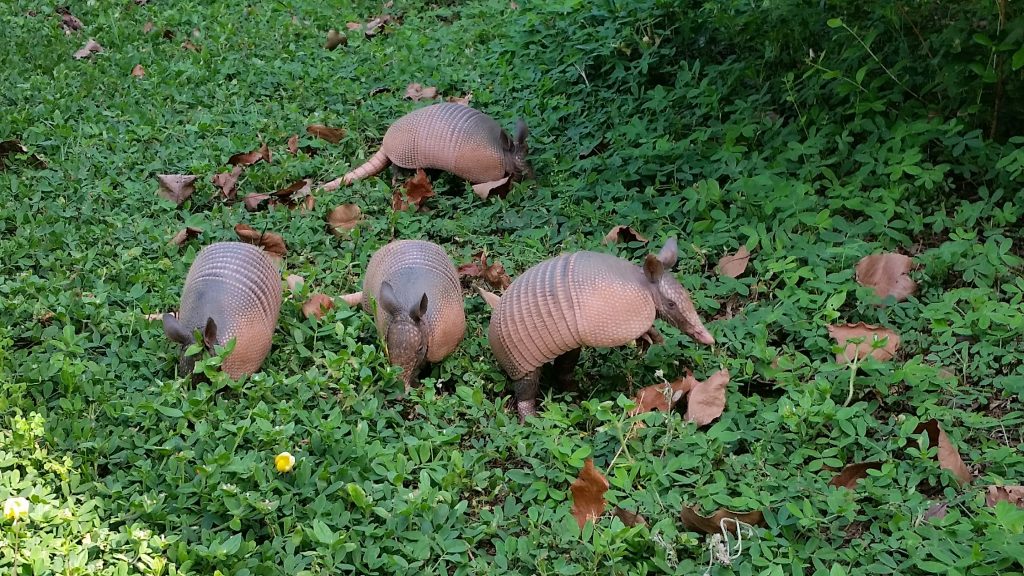
Our farm in Florida. The Armadillo family foraging in our Perennial Peanut wildlife friendly drought resistant ground cover. © Linda Taylor
Here in Panama on our Colina de la Paz Finca, Hill of Peace … the shift of questions is as great as the mind can stretch. How do we deal with depleted clay soil and four months of heat and no rain? Will the vetivar grass strengthen this deforested pasture land we are trying to grow on? How close and without cost can we find the organic supplements our soil needs … rice hulls, worm castings, cow or horse manure? How do we grow our own fertilizer, so we just chop and drop in this remote location? What plants here fix nitrogen? What about our own valuable nutrient rich urine and excrement? And can we physically manage to plant a food forest on a 45 degree incline?
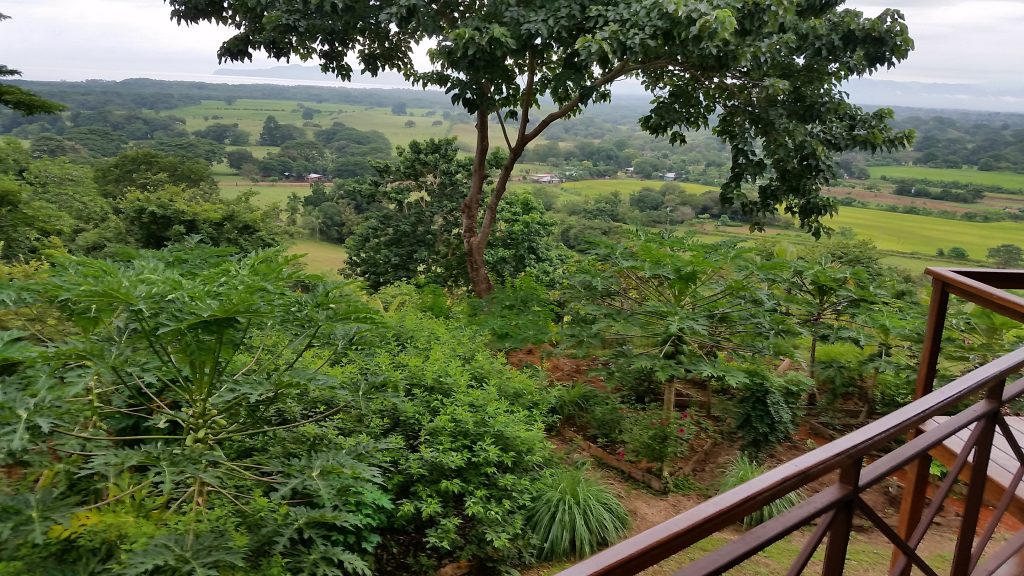
Gardens on the edge of the food forest hillside in Ojo de Aqua, Panama.© Linda Taylor
How do we get to the yucca root before the coati? The migratory gulf fritillary butterfly caterpillars need the passion fruit leaves … but will we ever get to taste the fruit? How do we nurture a jungle in our backyard and a food forest with gardens on the other side? Do we plant papaya for the monkeys so they eat leaves close to the trees and not run the ground? How do we channel the rainwater to the bananas and not onto the mountain road causing erosion. What makes a guanabana tree fruit … male/female plants or a certain pollinator?
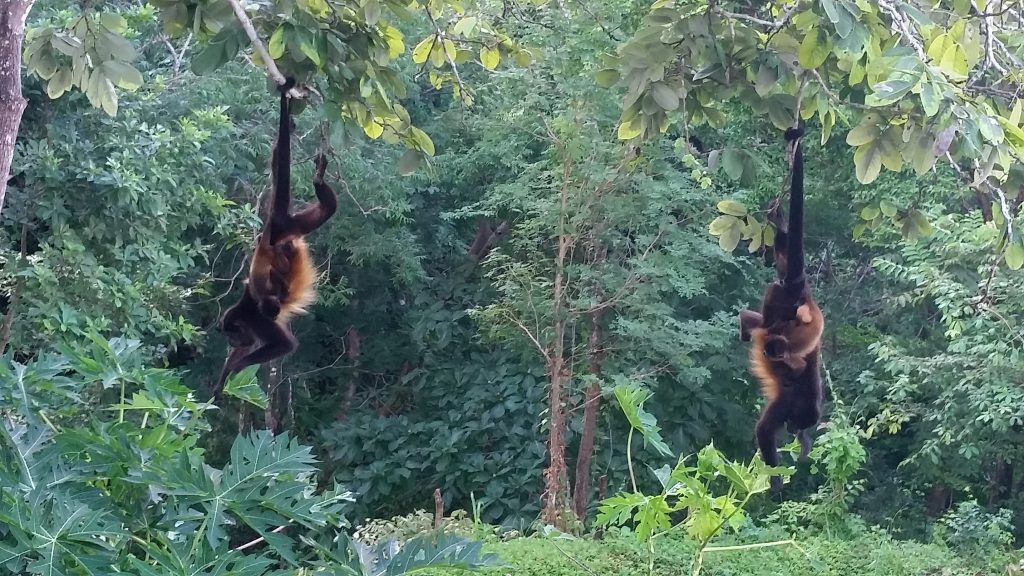
Female Azuero Mantled Howler Monkeys with babies eating papaya leaves. © Linda Taylor
So many questions. Each brings up our place in this ecosystem and the priority of desires. Do we follow the indigenous rule of only taking a third of what is produced … give one third to the animals and one third to the compost of the giving tree. Hard decisions when you are looking at tasty mangos ! And importantly, how do we engage the neighborhood and community around us?
These questions have been asked throughout history. How do we view nature as our ally not our enemy as we sustain ourselves with food. This inquiry is a big difference between any type of farming and a permaculture life. Listening and observing is essential. Not taking control is absolute. Using the brain of not just your head, but the ones that resides in your heart and stomach. How do you embrace the prime ethic of permaculture … taking personal responsibility?
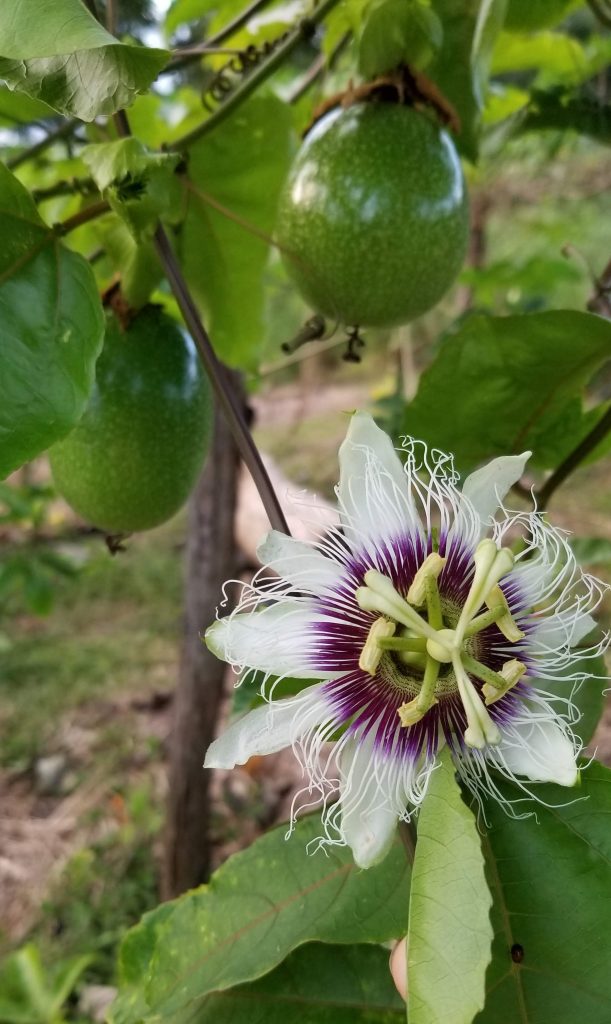
A successful maracuyá fruit from a passionfruit flower on our Colina de la Paz Finca in Panama. © Linda Taylor
But that is the fun of it and the love of it. Each day is filled with new questions and possibly a different answer to a previous response. It is a dynamic way of living. One filled with possibilities and unimaginable internal growth. Holistic thinking penetrates your mind.
And as Jon Kabat-Zinn so well expressed – “Wherever you go, there you are.”
Thank you for visiting.
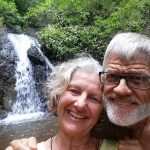
Waterfall next to our Casa. © Linda Taylor
In appreciation, Linda Taylor
All content and pictures © Linda Taylor
